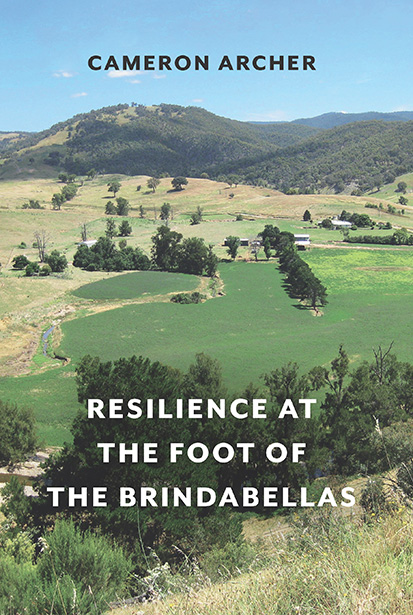
Author Cameron Archer with historian Keith Amos and Yass Valley stalwart, Jane Southwell, at the launch of Cameron’s book in Yass last week. Photo: Supplied.
About 15 years ago, Cameron Archer heard about some diaries in the Noel Butlin Archives at the Australian National University.
They were diaries for every year from 1869 recording what was happening on Cavan, then a 52,000-acre (about 20,000 hectares) property near Wee Jasper, the iconic fine wool sheep station which media magnate Rupert Murdoch has owned since the 1960s.
Fred Castle and his family originally owned the property and they kept the diary religiously from 1869 until 1942.
Every aspect of life on the vast sheep property was recorded, from rainfall figures to births, deaths and marriages, providing a unique look at life on the land in the early days.
“I heard about the diaries,” Cameron said, “and had a bit of a look at them. But it wasn’t until some years later that I came back to them.”
For Cameron, it was like going home, literally. Cavan and surrounds was his first home, his descendants – the Thatcher and Archer families – worked for the Castle family, later setting up their own properties nearby.
He also had little doubt there was a book in it. He spent time researching the archives, reading all about the life he knew as a child and the property in its later years.
The result is Resilience at the Foot of the Brindabellas, which was launched in Yass last week.
“I wrote it because I was born and grew up in this location and have had a lifelong interest in the local history,” Cameron said.
“The book is largely centred around Cavan and the Cavan Run which dominated the area with an original spread of 52,000 acres. Cavan got off to a fairly shaky start for a number of reasons. It was not until Fred and Wilhelmina Castle came to live permanently on Cavan around 1870 that it really began to do well as a productive grazing property.
“Castle employed both of my patrilineal great grandparents and some of their next generation and from this secure employment the Thatcher and Archer families were able to select and own The Brook and Brooklyn on Sawyers Gully Road respectively.”
Cameron said the book was only the start of the rich history of the region – there’s definitely a sequel in the works.
“In the meantime, this book should satisfy some of the curiosity about the way both Aboriginal peoples and Europeans have used the land. While there are not many local details about the Ngunnawal people, I have been able to source records to try to explain how they lived in the area and managed the land for thousands of years.”
Growing up in the bush, was simply the best, Cameron said.
“I went to the Mullion school which opened in 1959 and ran until 1962. Mostly there were about 17 kids there when I was there.
“I can’t complain about my childhood. It was full of animals, an ideal country childhood really – and every so often we’d go to town, but that was a big deal.”
Later, Cameron went off to Hurlstone Agricultural College, continuing a connection with country life that would last a lifetime. “I always knew agriculture would be my career path,” he said, “so I went to Sydney University to do agricultural science.”
Cameron and his family ended up settling in the Hunter Valley, but made regular trips back to his place of birth to visit family and friends. “I left the Yass Valley because it was too cold,” he joked.

Resilience at the Foot of the Brindabellas, was launched in Yass last week. Photo: Supplied.
There will always be a connection to the Yass Valley and to Canberra for Cameron, starting from when his family worked as shearers at Duntroon in 1839.
“That’s why I wanted to write this book,” he said. “My family is so entwined with the settlement of this region. It was like I felt I had to write about it, that it was a story that needed to be told. It was also a great opportunity to delve into some family history.”
Resilience at the Foot of the Brindabellas by Cameron Archer is available online.







